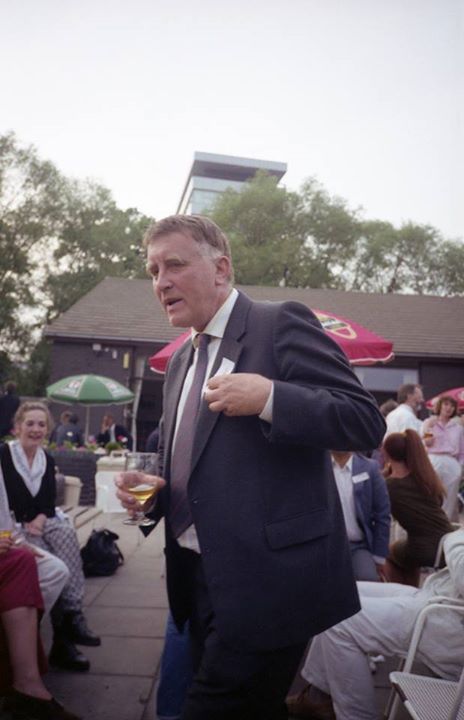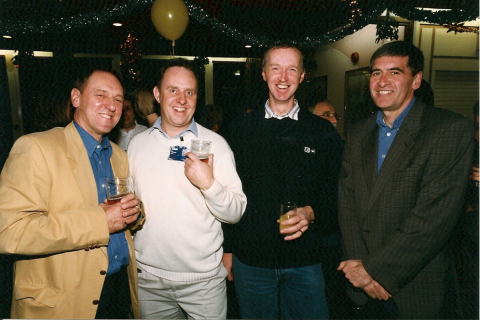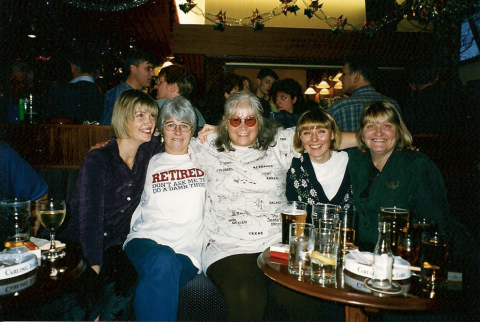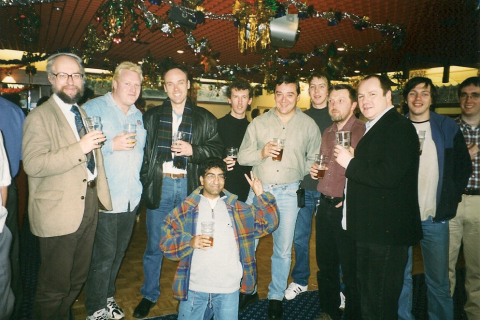Photo from Shirley O’Mara of John at the BBC Club, no reproduction without permission
John Bland, film editor, died recently. He joined BBC Birmingham as a news editor in Broad Street, and later became a film editor at Carpenter Road, before Pebble Mill was built. John’s credits include a Play for Today called Packman’s Barn 1976, the police series Juliet Bravo 1980; Mavericks, a BBC1 series in 1984 about eccentrics, produced by John Kenyon, which Sharon Pemberton assisted him on; and Countryfile amongst many others.
The following comments were left on the Pebble Mill Facebook page:
‘John Bland, a Film Editor at Pebble Mill for many years, passed away suddenly last week aged 78. His funeral will be held at Streetly Crematorium on Weds 26th August 2015 at 10.00am.’
Shirley O’Mara
‘I was John’s assistant for a while and he was very much part of my early years in editing at Pebble Mill. I recall being (pleasantly) surprised by his insistence that ‘Two Tribes’ (Frankie Goes To Hollywood) was the best single EVER and that Ruby Turner was the best singer to come out of Birmingham. (I think eclectic is the word!) I hope they’re both serenading you John. R.I.P.’
Sharon Pemberton
‘Great bloke! I ran the Run the World race with John, Ingrid Wagner and Geoff Dargue. We trained every lunchtime by running up all the flights of stairs at Pebble Mill. Judging by the state of us at the end of the race it didn’t do us much good!’
Mark Ray





